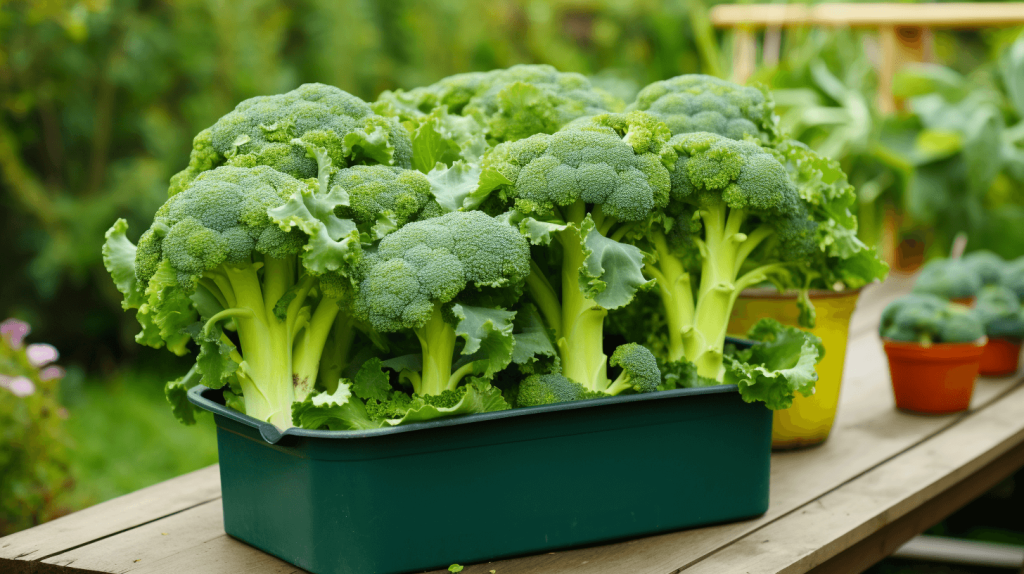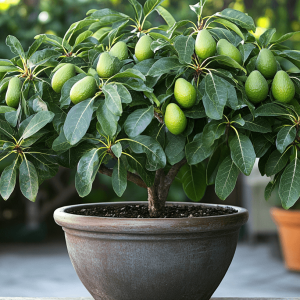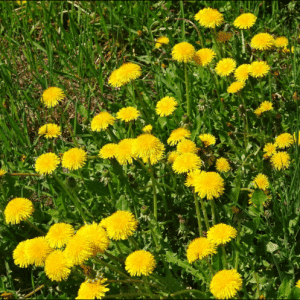
Growing broccoli in pots is a versatile and rewarding endeavor, suitable for gardeners with limited space or those looking to bring the joy of fresh, homegrown broccoli to their balconies. This detailed guide provides step-by-step instructions to successfully cultivate broccoli in containers, ensuring a bountiful harvest right at your fingertips.
Step 1: Choosing the Right Container
- Container Size:
- Select pots or containers with a minimum depth of 12 inches. This allows for ample root development.
- Drainage Holes:
- Ensure the chosen containers have adequate drainage holes to prevent waterlogging.
Step 2: Selecting Broccoli Varieties
- Determinate vs. Indeterminate Varieties:
- Choose determinate varieties for compact growth suitable for containers. Examples include ‘De Cicco’ or ‘Pirate.’
Step 3: Preparing the Potting Mix
- Well-Draining Mix:
- Use a high-quality potting mix with good drainage. Add perlite or vermiculite for additional aeration.
- Organic Matter:
- Incorporate well-rotted compost or aged manure to enrich the soil.
Step 4: Sowing Broccoli Seeds or Transplanting Seedlings
- Direct Sowing:
- Sow broccoli seeds directly into the pot at the recommended spacing, typically 18-24 inches apart.
- Transplanting Seedlings:
- If using seedlings, transplant them into the container, ensuring they are at the same depth as they were in their original containers.
Step 5: Watering Routine
- Consistent Moisture:
- Keep the soil consistently moist, ensuring it never dries out completely. Water at the base to prevent fungal issues.
- Avoid Waterlogged Soil:
- Prevent waterlogging by providing proper drainage and avoiding overwatering.
Step 6: Providing Adequate Sunlight
- Full Sun Exposure:
- Place the pots in a location with at least 6-8 hours of direct sunlight daily.
- Balcony Placement:
- If on a balcony, choose a spot that receives ample sunlight and protects the plants from strong winds.
Step 7: Fertilizing Broccoli Plants
- Balanced Fertilizer:
- Use a balanced, all-purpose fertilizer during the growing season. Follow package instructions for application.
- Mid-Season Boost:
- Provide a side-dressing of compost or a balanced fertilizer halfway through the growing season.
Step 8: Mulching for Moisture Retention
- Mulch Application:
- Apply a layer of organic mulch around the broccoli plants to retain moisture, suppress weeds, and regulate soil temperature.
Step 9: Pest and Disease Management
- Vigilant Monitoring:
- Regularly inspect plants for pests like aphids and cabbage worms. Remove them by hand or use insecticidal soap if needed.
- Disease Prevention:
- Provide adequate spacing between plants to promote air circulation and reduce the risk of fungal diseases.
Step 10: Harvesting Broccoli Heads
- Harvest Time:
- Harvest broccoli heads when they are firm and compact, just before the florets start to separate.
- Cutting Technique:
- Use a sharp knife to cut the main head, leaving the plant in place for potential side shoots.
Conclusion: Enjoying Homegrown Broccoli
Growing broccoli in pots is a delightful and space-efficient way to enjoy fresh, nutrient-rich vegetables. By following these steps and providing attentive care, you can successfully cultivate broccoli on your balcony or in your garden, savoring the satisfaction of homegrown produce.







I don’t think the title of your article matches the content lol. Just kidding, mainly because I had some doubts after reading the article. https://www.binance.info/pt-BR/register-person?ref=IJFGOAID